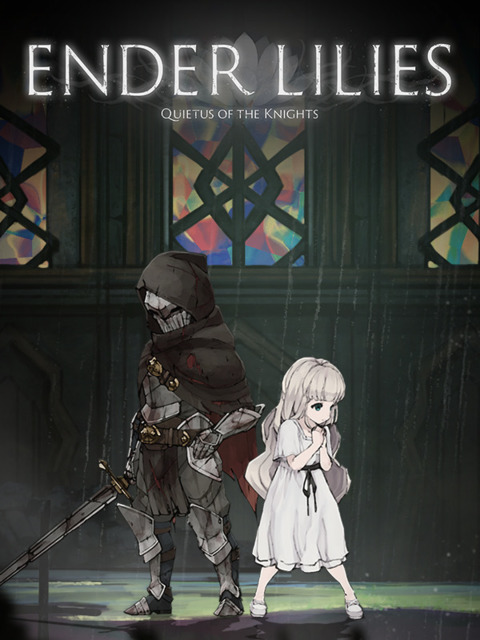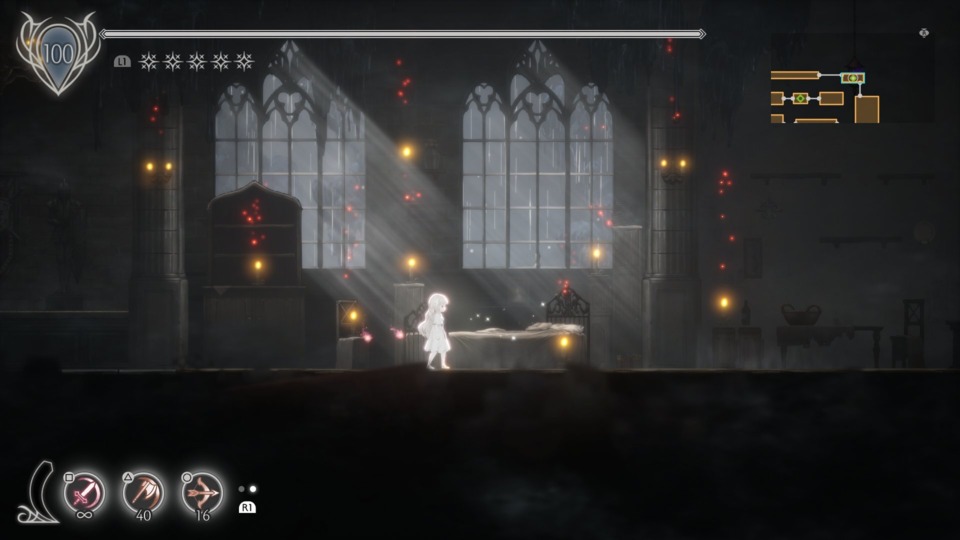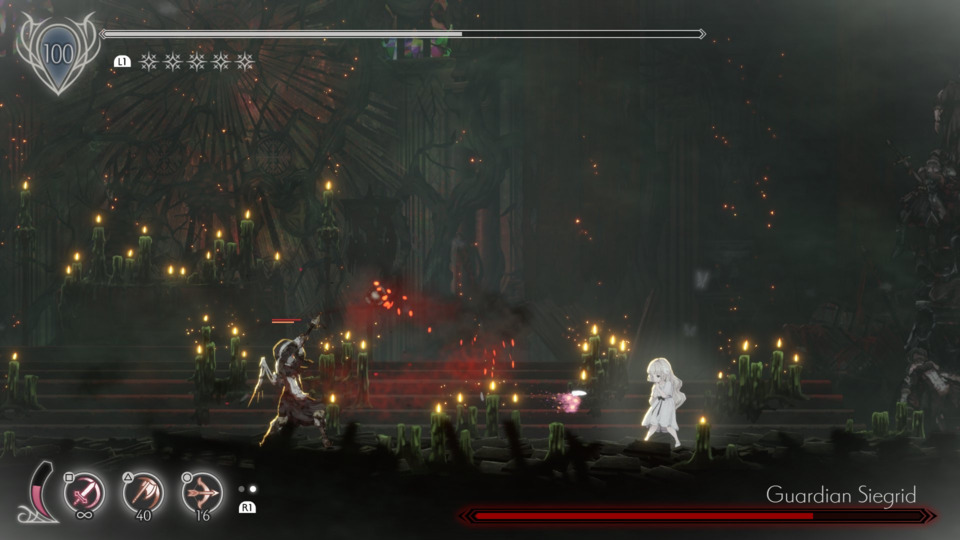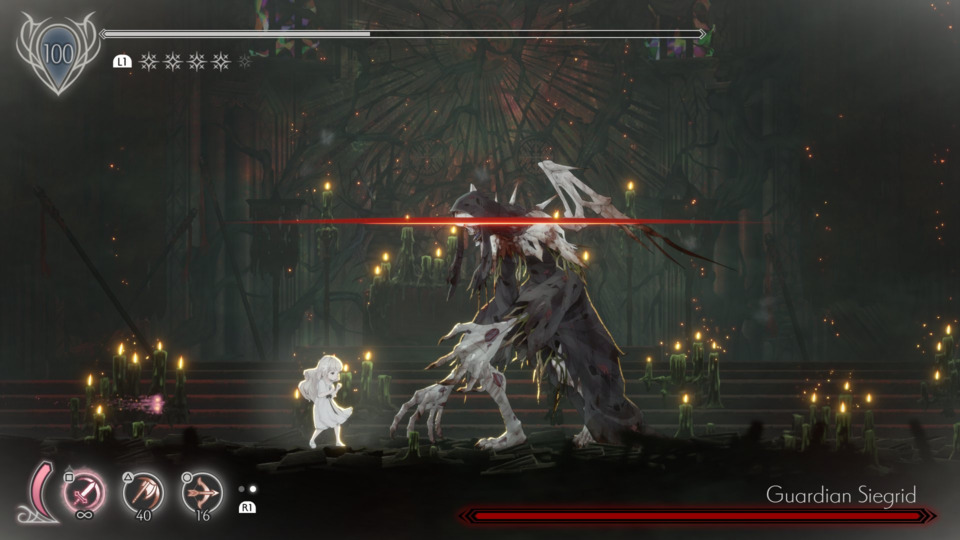Go! Go! GOTY! 2021: Game 1: Ender Lilies: Quietus of the Knights
By Mento 0 Comments

- Game: Adglobe and Live Wire's Ender Lilies: Quietus of the Knights.
- Release Month: January.
- Quick Look: N/A.
- Started: 01/01.
- Completed: 06/01.
Well, here we are, fashionably late, looking to review a whole stack of 2021 games in January 2022. I would've put this together in December but I was looking to finish up a couple of series (VN-ese Waltz and The Dredge of Seventeen, check 'em out) and Christmas is always a bad time for indulgences, which is to also say a good time for a feature on newish games. Our first port of call is the Gothic, picturesque, lugubrious explormer Ender Lilies: Quietus of the Knights in which a "White Priestess" named Lily attempts to purify the blight of a ruined kingdom with the help of the phantoms of its fallen heroes.
Right off the bat, Ender Lilies struck me as a "best of" amalgam of many 2D explormers, with or without Souls aspirations. Its plot is similar to Hollow Knight and Momodora: Reverie Under the Moonlight, its aesthetic and dour color scheme is similar to Salt & Sanctuary, and its soul system is similar to Bloodstained: Ritual of the Night (which of course was inspired in turn by Castlevanias Aria of Sorrow and Order of Ecclesia). If nothing else, it's an indication that the developers' did their homework when studying the competition, though having a heightened genre awareness is not necessarily a bad thing as I'll get into in a little while.

As the delicate Lily is defenseless on her own, she surrounds herself with spirits that she's recruited after purifying their bodies cursed by the Blight; the corrupting nature of which has since turned them into horrifying undead monsters robbed of their sanity. Each soul is either that of one of the kingdom's big-name heroes - the major boss fights of the game - or nameless peasants, nobles, soldiers, and prisoners caught in the same sudden apocalypse, which are all fought like mid-bosses while exploring. The named heroes are your main attack skills while the others are subskills, the latter often having uncommon firing patterns or defensive qualities at the cost of longer cooldowns and a finite stock. As was the case in the aforementioned Castlevania games with the same mechanics, there's a huge variety of these spirits to experiment with and potential synergies to discover, though the game's upgrade resources are finite enough that you're encouraged to find the skills that work best for you and push only those to their highest levels. The "main" skills basically work like different weapon types in Castlevania: you start with a standard longsword that slashes ahead in a horizontal arc, and soon find a heavy axe with a large vertical arc and a ranged spell with a slight homing effect. The weapons with the big arcs are naturally best at hitting flying enemies, and the game has something similar to the poise system of Souls where doing enough concussive damage can knock an enemy down and stun them for a while; as a result, I was rocking that heavy axe for most of the game.
As an explormer, there's naturally the usual selection of traversal upgrades, including the double-jump (found very early), the air-dash, the hookshot, and the ground pound. Of note is Ender Lilies's map system, which borrows a page from the new Resident Evil remakes by having map squares be one of two colors depending on whether or not you've found all the important items in those rooms: these items can include story notes written by the major players within this kingdom, the crystallized blight currency needed for upgrading spirits, or more useful upgrades like a relic (as with Hollow Knight, you have a very limited amount of points with which to equip these passive boosts) or a max health increase. The map also helpfully indicates exits you haven't yet been to with a red dot. The rooms are drawn to roughly correspond to their actual size as well.


On top of this forgiving map system, which still doesn't give too much away, the game is replete with other quality-of-life touches that puts it far beyond the standard level of fairness presented by explormers. For one, you unlock the ability to fast travel between checkpoint "respites" almost immediately once the game begins, and can at any time - at no cost - teleport back to the last one you visited. If you should die while exploring, there are no corpse run mechanics or loss of momentum: you simply reawaken at the checkpoint with the same map progress and items/XP you had upon death. Levelling up provides a minor boost to attack damage - health is entirely determined by upgrades and relics, as far as I can tell, and the only way to mitigate damage is through relics also - whereas the best means of increasing damage is using the crystallized blight found on corpses to upgrade your current spirits. Even if you're not the biggest fan of backtracking, the map and fast-travel systems help mitigate a lot of the busywork and the regular levelling ensures that you've never too underpowered unless you're running past everything. While the game is exceptionally fair with its exploration, the combat can be a bit tricky until you find the right groove: bosses in particular are nasty all the way through the game regardless of your level and upgrades.
Something I've noted after playing both Ender Lilies and Blasphemous a little while ago is how the two games betray something of the developers' preferences when it comes to their approach to the Souls series. In Blasphemous, parrying attacks is tacitly encouraged by how effective the resulting counters are and by how relatively simple those parries are to pull off; likewise Ender Lilies has a slightly stronger dodge roll than most of these Souls-like explormers, with almost every part of its tumbling animations given i-frames. It's a subtle look into how those developers respectively tackled the Souls games they were inspired by, and how those playstyles went on to directly influence their own attempts at the same formula. With no other effective means of avoiding damage besides leaping out the way, the dodge roll is something you learn to rely on quickly while playing Ender Lilies.
Another aspect I appreciated about Ender Lilies is that, while it starts fairly linear, there's a point around the mid-game where you find yourself with several avenues to explore. Some of these locations are mostly blocked off until you have the right upgrade, but you're still able to peek inside and grab some early items and get a feel for the enemy difficulty in that part of the map; because getting around is so easy, there's little to lose if you go off in a direction that isn't the one the game is subtly hinting you towards for its next story beat.
I'm not going to say that Ender Lilies is the most original game of this particular mold - if you've played as many of these games as I have, the similarities are all the more stark - but it is one that embodies a firm understanding of what makes these games tick and what is perhaps unnecessary. The game design is purpose-built to minimalize backtracking, eliminate annoying corpse runs death penalties that serve to fester anxiety due to what's at stake if you fail, elucidate on where you might want to revisit by highlighting areas that still have something to find, and focuses its challenges instead on tough enemy and boss encounters that require the player carefully consider their spirit selections and study their opponents for attack patterns to avoid and pauses to exploit. It is also an exceptionally pretty game in terms of backgrounds and lighting effects, though I'm still not a fan of that awkward "paper doll" animation style that is regularly used by non-pixel 2D games. Nonetheless, a promising start to a month's worth of GOTY catch-up playthroughs.
Current 2021 GOTY Ranking:
- Scarlet Nexus
- Ender Lilies: Quietus of the Nights
